The world is home to a plethora of fascinating ancient ruins, from crumbling cities to temples that have withstood the test of time. These ruins tell us the story about their glorious past and the subsequent fall. Through architectural remains, we can gather what building techniques and civilizations were like long ago. However, it can be hard to imagine what these buildings looked like in their dazzling original forms. That’s why Expedia recently showed off these GIFs that revitalize ancient ruins to their former glory. In a matter of seconds, centuries of natural and intentional damage and decay are reversed to reveal a rare glimpse at what the original structures would have looked like.
With the help of technology, you can step back through the ages and take in the unspoiled wonder of some of the world’s most incredible structures. Read on to see what seven ancient iconic buildings look like now versus how they would have appeared in their glory days.
Pyramid of the Sun, Mexico
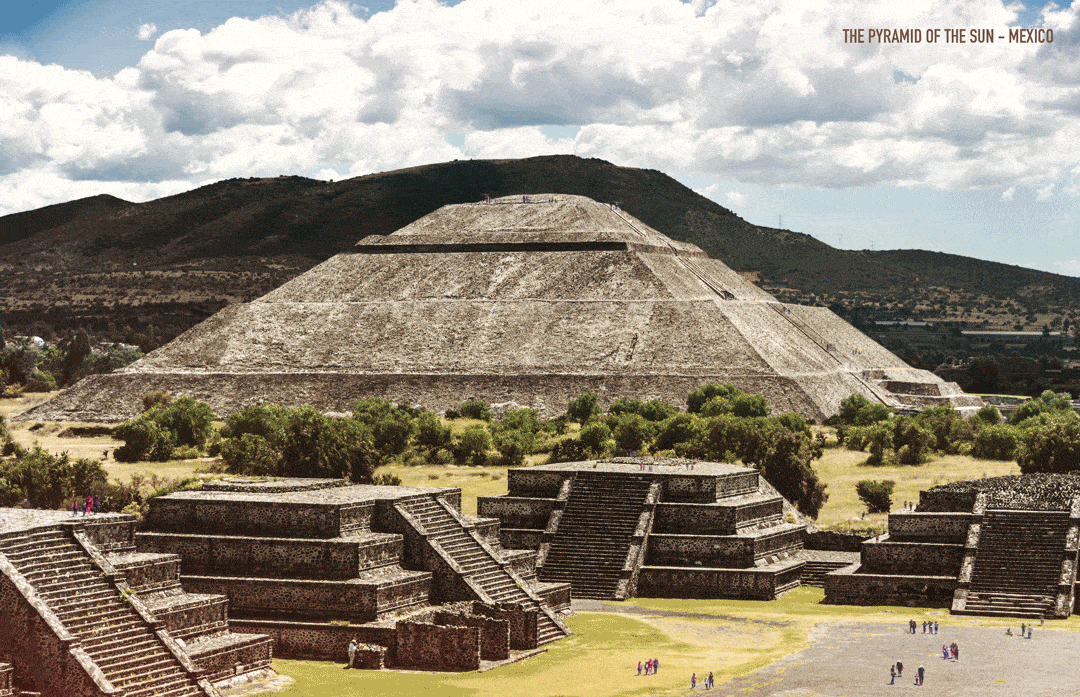
Towering and mysterious, the Pyramid of the Sun rises above silent Teotihuacán, an empty city that once bustled with as many as 200,000 people and stood at the center of Mexico’s pre-Hispanic empire. Erected by a virtually unknown culture in the first century A.D., the city sprawled over an area larger than imperial Rome. But by A.D. 750 it had been abruptly abandoned, perhaps because of disaster or drought. At roughly 210 feet high, the Pyramid of the Sun ranks as one of the largest pyramids in the world. The builders raised the Pyramid of the Sun around A.D. 100, somehow transporting and erecting three million tons of stone, brick, and rubble without benefit of the wheel, beasts of burden, or metal tools.
Temple of Luxor, Egypt
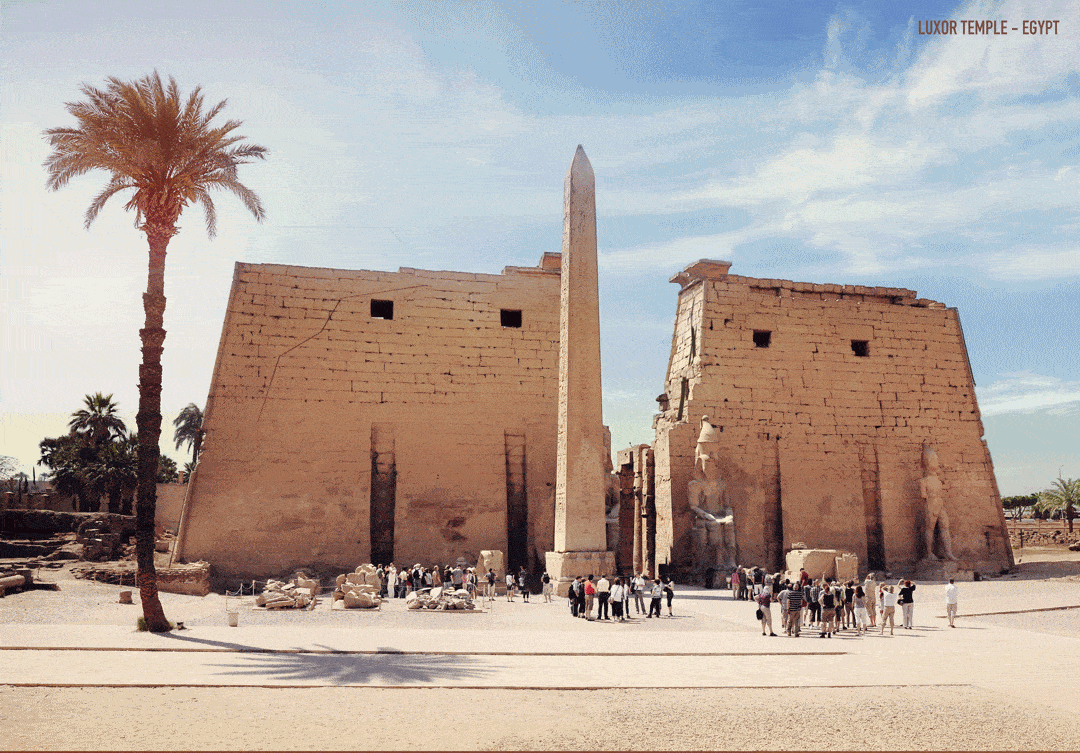
The temple — located in what was once the Ancient Egyptian city of Thebes and is now Luxor — was the site of the annual reenactment of the pharaoh’s coronation. Commissioned by Amenhotep III in 1380 BC, the temple was renovated by Rameses II about a hundred years later to incorporate a great pylon gateway and an open courtyard. Thanks to excavations completed in the 1960s and onward, archaeologists have been able to recover thousands of sandstone fragments inscribed with hieroglyphs and images of temple rituals. They also unearthed a life-sized statue of Queen Nefertari, wife of Ramses II. It’s a testimony to the country’s long history and a must-see on any Egyptian holiday.
Nohoch Mul Pyramid (Coba), Mexico
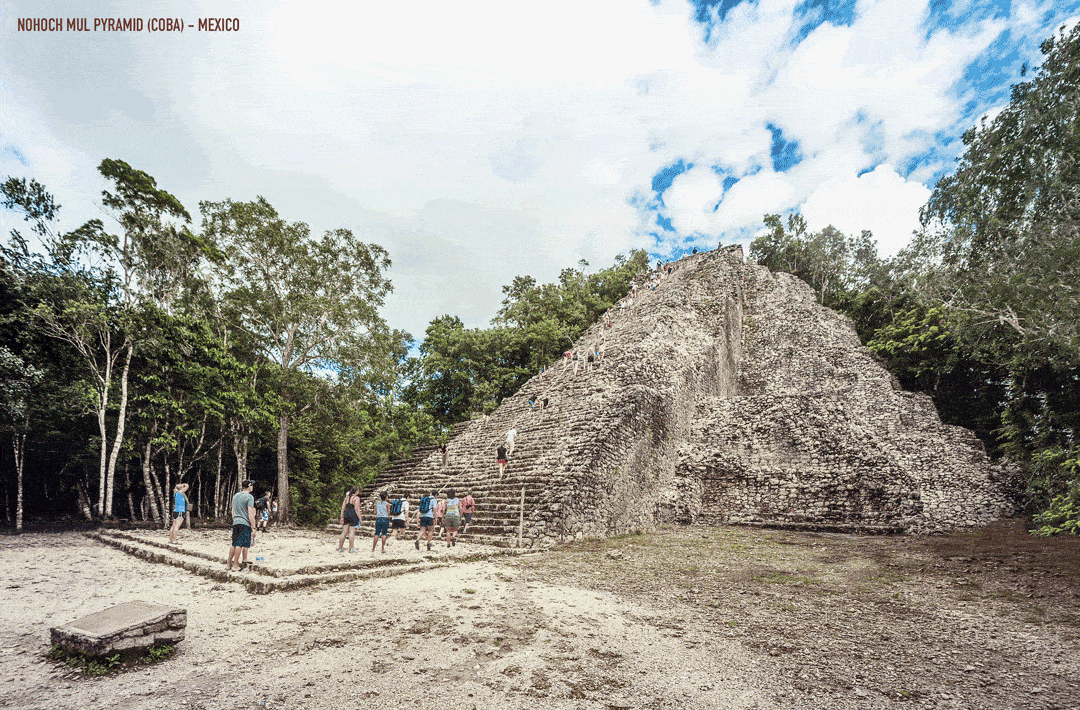
At 137 feet tall, Nohoch Mul is the tallest Mayan pyramid on the Yucatan Peninsula and the second tallest Mayan pyramid in the world. The site is thought to have been first settled between 100 BC and 100 AD and abandoned around 1550, upon the arrival of the Spanish conquistadors. It was discovered in the 1800s, but the archaeological site wasn’t opened to the public until 1973, as the thick jungle which surrounded it made it difficult to find. To reach the top of the pyramid visitors need to climb 120 steps.
READ MORE: Ancient Wonders in Modern Day
Parthenon, Greece

The Parthenon in Athens, Greece, was constructed in the 5th century BCE. Standing tall on the hill of the Acropolis, Athens’ ancient citadel, the Parthenon, was dedicated to Athena, the Greek goddess of wisdom and war. The temple — which is constructed from white marble in the Doric style — sustained damage through the centuries, most notably when its center was destroyed in 1687 during the Great Turkish War. While it was mostly destroyed, the Parthenon’s basic structure has survived. Nowadays it’s a tourist hotspot attracting millions of visitors a year.
Temple of Largo Argentina, Rome

This square in Rome houses not one, but four Roman temple ruins. It was discovered during construction work in the 1920s. The temples have been cataloged by letter (A-D) but are also known by their religious function. Temple B is the most recent of the four temples, and six of its columns, the original flight of steps and the alta are all still intact. Visitors to the area will not only find a fascinating archaeological site, but also hundreds of cats living among the ruins. A reimagining of the Area Sacra di Largo site offers a look at the splendor of the temple
Temple of Jupiter, Italy
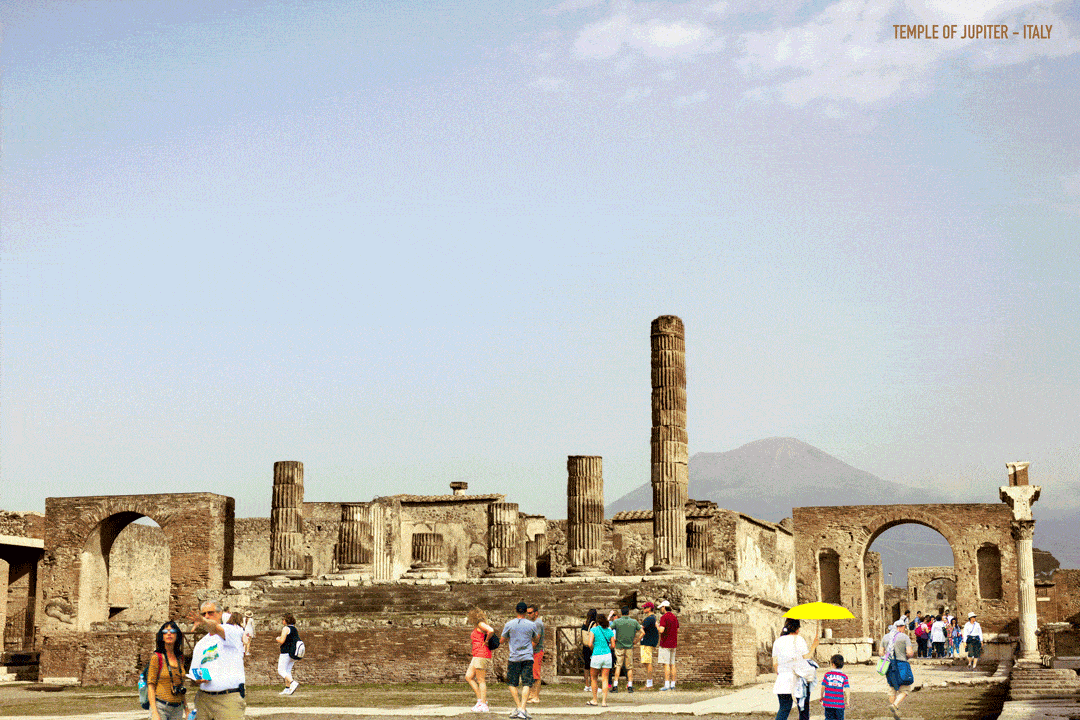
Built in dedication to Jupiter, the god of the sky and thunder, this temple was the main center of religious life in the ancient city of Pompeii, a small Roman town on the Bay of Naples. It stood dominant in the Forum, with Mount Vesuvius looming ominously behind it. The volcano erupted in August of 79 AD, tragically destroying Pompeii. The site was rediscovered in the 16th century, and many years of excavation have given the millions of yearly visitors a fascinating insight into the daily life of this 1st century Roman city.
Hadrian’s Wall, England
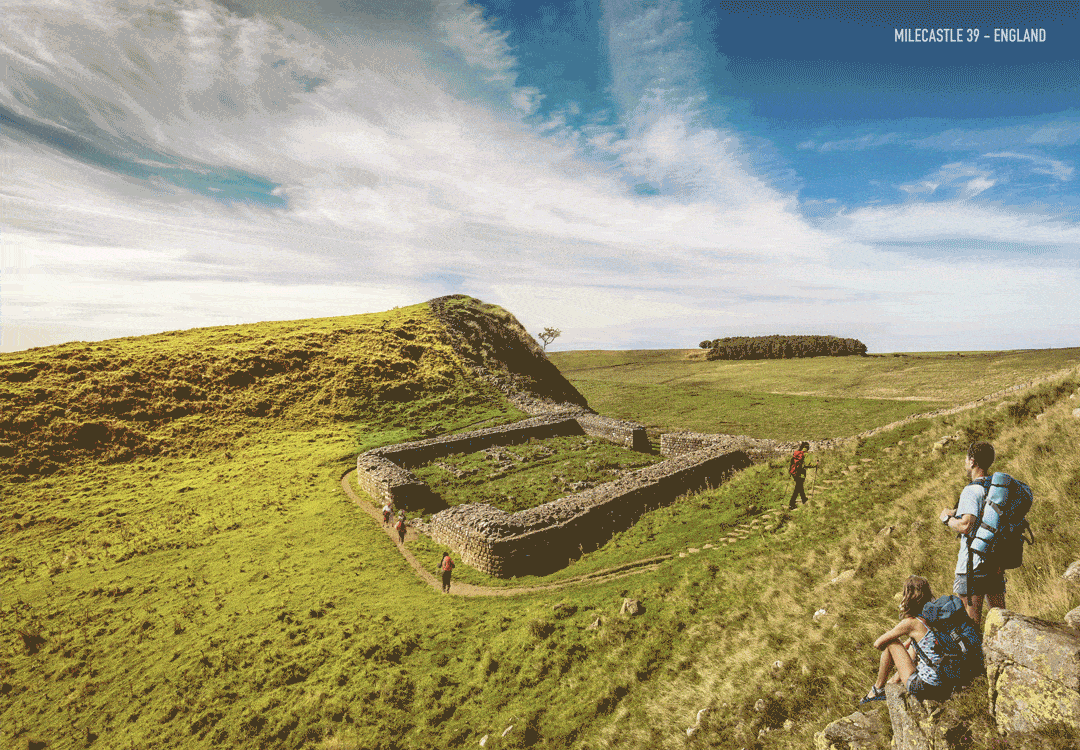
The Romans built Hadrian’s Wall across England as a way to secure the empire from would-be attackers. They built “milecastles,” or forts, within the wall at intervals of approximately one Roman mile. Stretching 73 miles across some of the most dramatic countryside in England, Hadrian’s Wall dates back to the 1st century AD.

